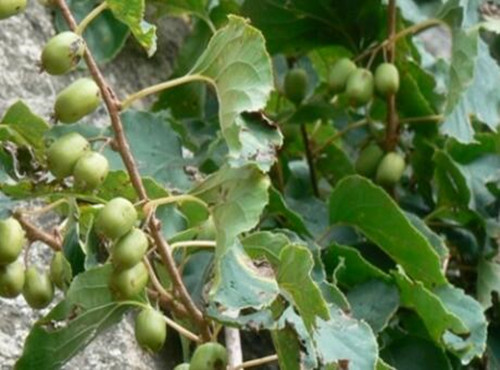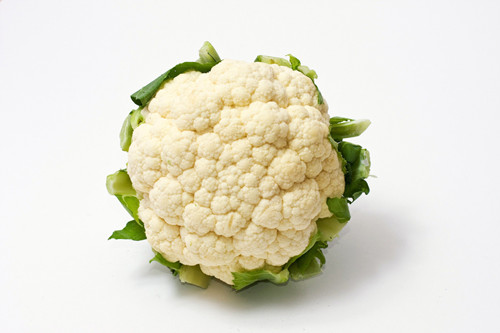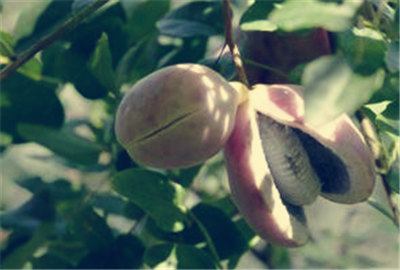What does the national first-level key protected wild plant rattan jujube look like? How to plant it? What are the effects and effects?
Rattan jujube, endangered species. Also known as bitter jujube, woody vine. There is only sporadic distribution in the narrow range of Jinghong in Xishuangbanna, which was born at the edge of the seasonal rainforest in the valley of 620 meters above sea level. This is the only genus and species in China. So, what does rattan jujube look like? How to plant it? What are the effects and effects?

What does rattan jujube look like?
Lianas woody, twigs puberulent. Leaves leathery, ovate or ovate-elliptic, 9.5-22 cm long and 4.5-13 cm wide, apex acuminate or protruding, base rounded or obtuse, broadly cuneate, both surfaces glabrous, glossy above, lateral veins 5-9 pairs, raised on both surfaces, reticulate veins sparse, inconspicuous; petiole 2.5 cm long, tip dilated and geniculate. Male inflorescences 1-3 flowers, clustered, bearing deciduous axils, peduncle 6-10 mm long, puberulent; sepals 12, arranged in 4 whorls; petals 6, stamens 6, separate. Infructescences borne on leafless old branches, bearing fruit 31, peduncle stout, up to 2 cm long; drupe elliptic, orange-red at maturity, 2.5-3 cm long, 1.7-2.5 cm in diameter, carpel stalk 1.5 cm long; seeds elliptic, 1.5-1.7 cm long.
How to plant rattan jujube?
1. Temperature
Temperature is one of the main factors affecting the growth and development of Ziziphus jujuba, which directly affects the distribution of Ziziphus jujuba. The average daily temperature during flowering period is more than 22 ℃, and the average daily temperature from flowering to autumn is decreased to 16 ℃. Rattan jujube is a temperature-loving tree species, its growth and development needs higher temperature, such as late sprouting, early defoliation, low temperature and less fruit setting, slow fruit growth, less dry matter and poor quality. Therefore, the temperature during flowering and fruit growing period is an important limiting factor in the planting area of rattan jujube. Rattan jujube has a strong tolerance to low temperature and high temperature, can survive the winter safely at-30 ℃, and can blossom and bear fruit at the absolute maximum temperature of 45 ℃.
two。 Humidity
Rattan jujube has a wide range of adaptation to humidity, which is distributed in the area with annual precipitation of 1200 mm, and the precipitation of 400mm and 700mm is more suitable. Rattan jujube is resistant to drought and waterlogging, and it can also bear normal results in the year of more than 100 mm of annual precipitation in Cangzhou, and the stagnant water in the jujube garden did not die of waterlogging for more than a month.
3. Light
Rattan jujube has a strong preference for light, light intensity and sunshine length directly affect its photosynthesis, thus affecting its growth and fruit. The effect of light on growth and fruit is common in production. The rattan jujube in the closed jujube orchard has weak tree potential, poor growth of jujube head, secondary branch and jujube hanging, many ineffective branches, many dead branches in the inner chamber, low yield and poor quality. As far as a tree is concerned, there are more fruit in the outer and upper part of the crown, good quality, less fruit in the inner chamber and lower part, and poor quality. Therefore, in production, in addition to reasonable close planting, we should also shape a good tree structure and improve the lighting conditions of various parts to achieve high yield and high quality through reasonable winter and summer pruning.
4. Soil
Soil is the supply of water and mineral elements for the growth and development of Ziziphus jujuba. Soil texture, soil thickness, air permeability, pH value, water and organic matter have a direct impact on the growth and development of Ziziphus jujuba. Rattan jujube has lax requirements on soil, salt-alkali resistance and barren resistance. It can grow normally in the range of soil pH 5.5-8.2, and can be tolerated when the soil salt content is 0.4%, but especially the rattan jujube growing in the deep sandy loam has tall crown, deep root system, strong growth, strong yield and high and stable yield. growing in sandy or gravelly soil with low fertility, the water and fertilizer conservation is poor, the tree potential is weak, and the yield is low. The rattan jujube growing in clayey soil has poor yield due to poor air permeability, small root width and crown width. This is mainly due to the different nutrients and growing environment provided by the soil to rattan jujube. Therefore, the garden should be built on the deep loam as far as possible. for the rattan jujube growing under the condition of poor soil quality, it is necessary to strengthen the management, improve the soil fertilizer supply, water supply capacity and air permeability, so as to meet the demand of fertilizer and water for rattan jujube. to achieve the goal of high quality and stable yield.
What are the effects and functions of rattan jujube?
1. Food has the effect of replenishing qi and nourishing yin, tonifying blood and activating blood, so it is listed as a national first-level key protected wild plant.
two。 Wooden Fujimoto. Twigs puberulent. The leaves are leathery, ovate or ovate-oval, only a single genus in China, endemic to Yunnan, endangered species, national first-class protection, with high ornamental value.
Time: 2019-03-20 Click:
- Prev

How much is organic cauliflower per jin? What's the difference between and cauliflower? How's the output? Attached planting technique
When going to the market to buy cauliflower, I often hear some vegetable vendors say how good their cauliflower is, it is organic cauliflower, and its nutritional value is higher than that of ordinary cauliflower, so the price is higher. Many consumers are skeptical when they hear this because they don't know the difference between organic vegetables and cauliflower. actually
- Next

How much is trifoliate akebia market price? How many months does it usually bear fruit? What are the planting prospects?
Akebia trifoliata is distributed in Hebei, Shanxi, Shandong, Henan, southern Shaanxi, southeastern Gansu and Yangtze River Basin provinces and regions in China. So how much is the market price of trifoliate aristolochia? How many months does it usually bear fruit? What about the planting prospects? The details are as follows: Akebia trifoliata generally blossoms in April-May and bears fruit in July-August
Related
- Fuxing push coffee new agricultural production and marketing class: lack of small-scale processing plants
- Jujube rice field leisure farm deep ploughing Yilan for five years to create a space for organic food and play
- Nongyu Farm-A trial of organic papaya for brave women with advanced technology
- Four points for attention in the prevention and control of diseases and insect pests of edible fungi
- How to add nutrient solution to Edible Fungi
- Is there any good way to control edible fungus mites?
- Open Inoculation Technology of Edible Fungi
- Is there any clever way to use fertilizer for edible fungus in winter?
- What agents are used to kill the pathogens of edible fungi in the mushroom shed?
- Rapid drying of Edible Fungi

